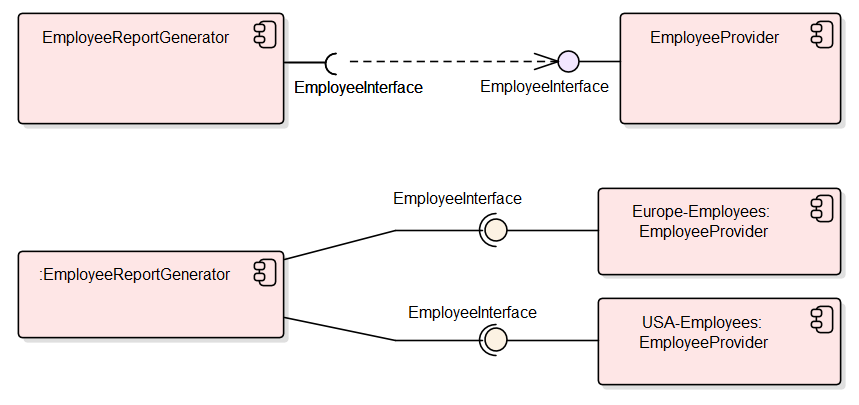I'm having a hard time understanding the difference between dependency and assembly(ball and socket) in UML component diagram.
I googled a lot and only found this relative question : uml component diagram difference between assembly and interfaces with dependency
But I don't really understand the answer to that question, I specifically want to ask :
- What does he mean by "definition level" and "instance level" ? I understand that there is only one diagram, are there two ?
- Whether there are two or not, can you give me a valid example which has "dependency" and "assembly" and explain why the first was "dependency" and the second was "assembly" ?
Note that I'm not asking about any particular image I found on web, I'm asking here in general, Also I want Uml 2 :) .
I prefer examples because I don't understand all the words in UML, also I prefer these examples to be somewhat realistic , that is not "A and B" but for example "Order and Person".
My goal of the question is to draw the Component diagram for our graduation project that we'll give to the professor :) .

